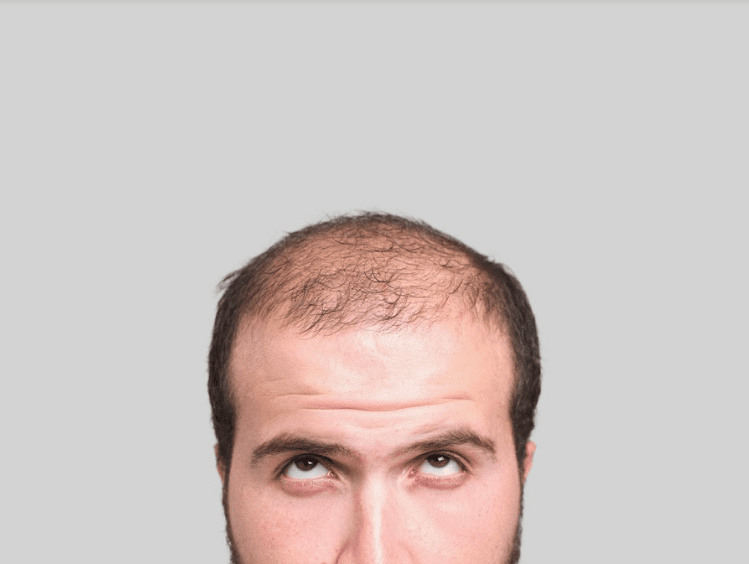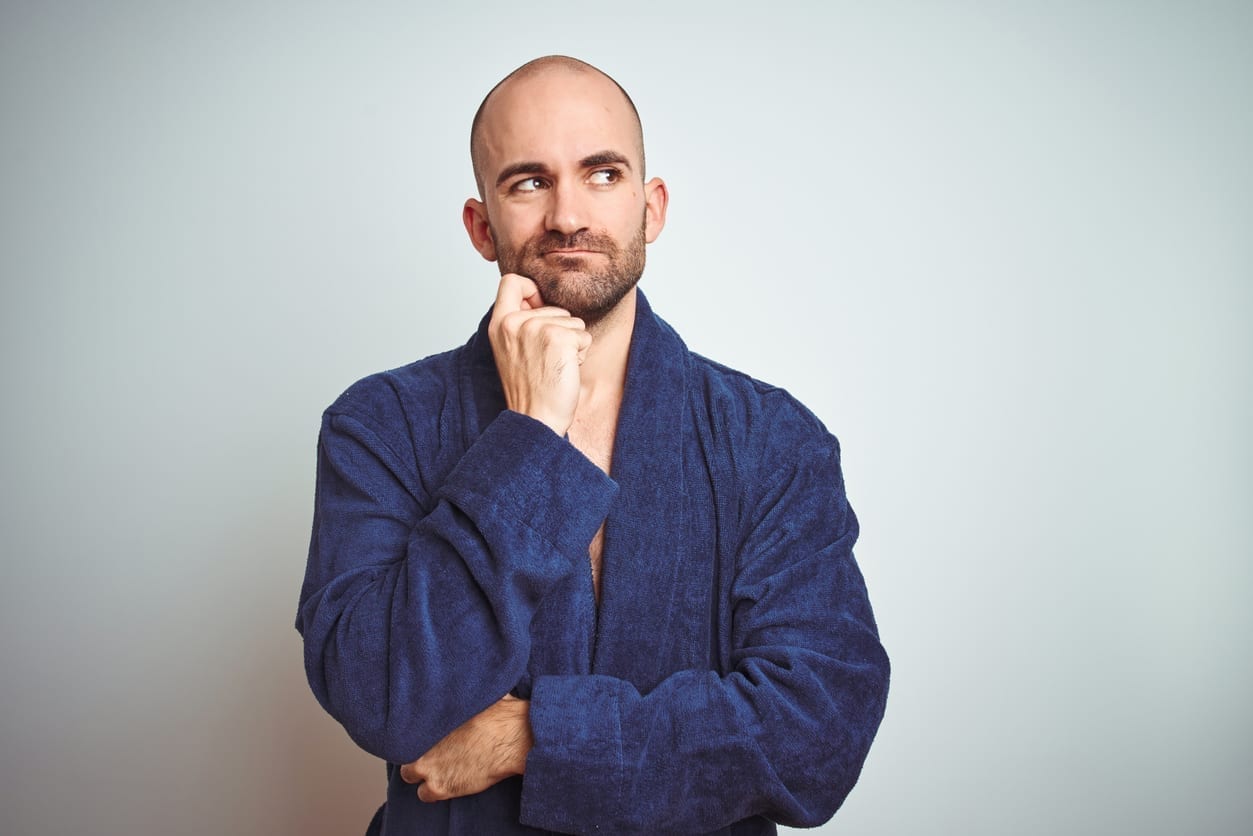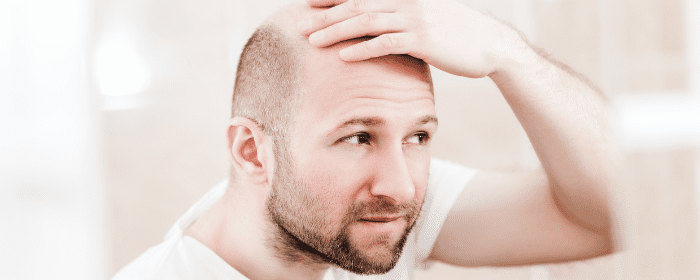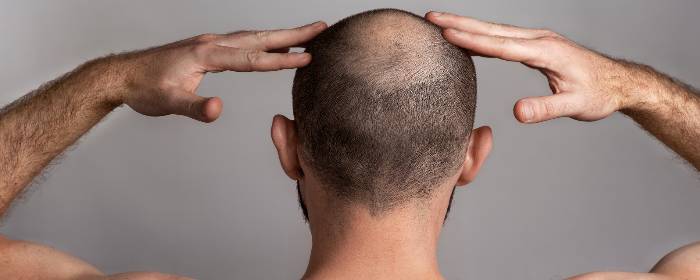
by Stemedix | Jun 3, 2024 | Age Management, Hair Regrowth, Health Awareness, PRP, Regenerative Medicine, Stem Cell Research, Stem Cell Therapy
Your hair can be part of your identity. For some people, their hair is a symbol of their spiritual beliefs. Whether you’re focused on beauty and aesthetics or a deeper meaning behind your hair, hair loss can be devastating.
For some people, regenerative medicine is an innovative, research-based solution to hair loss. Learn more about how regenerative hair loss treatments may restore your healthy locks.
How Hair Loss Is Related to Your Well-Being
Losing hair is often a symptom of an underlying health problem. While some people experience hair loss due to genetics or lifestyle choices, others may face lurking medical issues. Here are some of the ways your hair growth (or lack thereof) is related to your physical and mental wellness.
Self-Esteem and Confidence
You may feel embarrassed, ashamed, or self-conscious if you start to lose your hair. Both men and women struggle with remaining confident after significant hair loss. Your mental well-being may suffer if you can’t get your hair to grow back on its own.
Some cultures associate losing hair with aging and other stereotypes. This can be devastating for someone going through medical, hormonal, or age-related hair loss. Healthy hair regrowth may help you regain the confidence you lost.
Hormones
Your hormones are chemical messengers that regulate all of your body’s processes. Hair growth is tied to your hormones, and any fluctuations or declines in certain hormones can lead to losing hair. Think about post-pregnancy hair shedding; this happens because your body’s cascade of pregnancy hormones changes.
Hormonal changes as you get older can affect your hair. Age-related hair loss and thinning primarily affect women due to declines in estrogen production, but this problem can affect men as well.
Genetic Baldness
Male-pattern baldness is passed down through families. If you carry the gene for this condition, you may experience very early balding, starting in your 20s or 30s. This can change your appearance and make you feel older than you really are.
There are no ill physical effects from male-pattern baldness besides losing hair. However, you may experience poor mental health as a result of your unwanted early hair loss and thinning.
There is no cure for male-pattern baldness, but you can take steps to treat it. Regenerative medicine is here to intervene and treat hair loss in a natural, science-based way.
ExogroPro: The Latest in Hair Regrowth Science
When you experience hair loss of any kind, you probably have two priorities — prevent further hair loss and replenish your missing hair. ExogroPro, a professional-grade hair loss solution, addresses both of these problems at once.
How It Works: Preventing Further Hair Loss and Regrowing Lost Hair
ExogroPro works to stimulate your hair follicles, causing them to grow healthy hair again. This treatment uses the power of specific exosomes, which carry materials between your cells.
ExogroPro is designed to send signals to your hair follicles that stimulate hair growth. Because of exosomes’ extracellular communication abilities, they may be able to revive “dead” hair follicles on your head.
Because of this treatment’s therapeutic effects on hair follicle health, it may help prevent further hair loss and thinning. By rejuvenating your hair follicles and preventing them from going dormant, ExogroPro offers a possible solution to unwanted lost hair.
The Procedure: What to Expect
The premium patent pending ExogroPro formula is injected into the scalp to deliver exosomes to the hair follicles. These exosomes originate from human stem cells, specifically mesenchymal stem cells. This is just another way we can harness the power of stem cells to regenerate and repair damaged tissues within your body.
After two to six months, you may notice your hair growing back thicker and fuller than before. The results window varies, but one thing is certain — hair regrowth is worth the wait.
The Benefits of Choosing Regenerative Medicine for Hair Growth
With many prescription hair growth drugs on the market, you may be wondering — why choose ExogroPro? Here are the major benefits of choosing regenerative medicine for hair regrowth and thickening.
May Be More Effective Than Traditional Treatments
There are numerous treatments for hair loss, including PRP injections, topical oils, and more. These have varying efficacy and likely won’t give you the results you’re looking for. Prescription-strength hair growth drugs may not work for you either, resulting in frustration and discouragement.
Regenerative medicine harnesses the power of science and innovation. By using human stem cells, we work with the body processes already in place within your system. Exosomes may prove to be more effective and efficient than other hair loss solutions.
Drug-Free Therapy
Exosomes are naturally found in the human body. When you choose ExogroPro, you choose drug-free natural therapy for your hair and scalp.
While prescriptions can be helpful for some people facing hair loss, it’s understandable to want a natural alternative. We work with your natural healing and regrowth processes, not against them.
Dual-Action Treatment: Prevention and Active Regrowth
It’s impressive to consider how ExogroPro not only prevents further lost hair but can revive faulty hair follicles. This dual mechanism is key to getting the full head of hair you’re after. If it works for you, you’ll no longer have to mourn the hair you’ve lost — you could potentially get it back!
Encourages Hair Health
Solving hair loss isn’t just about replacing lost hair. It’s also about growing healthy, strong locks that can withstand damage and remain intact. ExogroPro promotes hair follicle health by improving cellular communications in the injected tissues. What’s more promising than the idea of a full, healthy head of hair after hair loss and thinning?
Combating Hair Loss and Thinning with Medical Science
It’s important to seek evidence-based treatments for your hair loss. No matter what the root cause of your hair problems is, you may find regenerative medicine to be a viable solution.
You don’t have to mourn your lost hair forever. Regenerative medicine is at the forefront of medical innovation and science, which could spell good news for your hair.

by Stemedix | Mar 24, 2020 | Hair Regrowth, Stem Cell Therapy
Considering Stem Cell Hair Restoration? Florida Residents, Find Out More
If you’re experiencing hair loss, you’re not alone: more than 50 million men and women have some degree of hair loss, which is often triggered by the natural process of aging. It can also be caused by certain illnesses and medical treatments. Thus, thinning hair is often viewed as an inevitable fact of life—but it doesn’t have to be.
If you’re considering stem cell hair restoration, a Florida-based regenerative medicine therapy provider, Stemedix, can help. They use stem cell treatments to address not only medical conditions such as neurodegenerative and autoimmune disorders, but also to promote overall wellness, which includes addressing common cosmetic concerns.
Hair loss isn’t strictly cosmetic, however. It can profoundly impact your quality of life, confidence, and satisfaction with your appearance. Over time, these negative impacts can transcend into your personal and professional relationships, taking their toll on your overall quality of life and potentially leading to larger psychological issues such as depression and anxiety.
Stem Cell Hair Restoration: Florida-Based Treatment
Fortunately, stem cell hair restoration is available for individuals who feel that hair loss or thinning is beginning to leave its mark on their lives. Whether you’ve tried medications in the past without any success or you want to avoid other interventions altogether, stem cell treatment is a promising option.
At our Florida facility, patients can receive a powerful dose of stem cell exosomes, which have hundreds of proteins and spark regeneration. Known for their ability to promote cell survival, exosomes have been shown to induce hair growth by stimulating follicles. They work by acting on several key mechanisms, including the expression of signaling molecules, to activate regenerative factors.
Patients have achieved noticeable new growth after a single treatment, though additional sessions may be needed depending on the degree of hair loss. Unlike other therapies, however, stem cell hair restoration has few to no side effects and does not require downtime or extensive healing (as seen in invasive surgical procedures). Instead, it simply turbocharges the body’s own natural regenerative processes to restore its youthful qualities. If you are looking to benefit from Stem Cell therapy then contact us today!

by Stemedix | Mar 17, 2020 | Stem Cell Therapy, Hair Regrowth
If you’ve been experiencing hair loss, you may be considering your treatment options. Many individuals have little success with widely available products that promise hair regrowth, and understandably want to avoid invasive procedures such as hair transplantation. Fortunately, there’s another option: stem cell hair restoration.
What Is Stem Cell Hair Restoration?
Stem cell therapy for hair restoration employs the use of stem cell exosomes, powerful components with an important role in cellular communication. They have over 200 signaling proteins and can turn on regenerative factors, prompting the cellular survival that can help to prevent further hair loss and stimulate new growth. Patients often notice new hair growth after just one session, with additional treatments leading to even better results.
How Much Does it Cost?
Stemedix offers stem cell therapy for hair restoration starting at $3,900. When you consider the cost of hair transplant surgeries, which can vary from $4,000 to $15,000, stem cell hair treatments become an attractive, cost-effective option. This is especially true considering the fact that, as with any surgery, recovery from hair transplants may come with additional costs, including pain medications and the cost of treating infections (the most common complication of the treatment).
Moreover, you simply can’t put a price tag on the boosted confidence, comfort, and overall improved quality of life that comes with thicker, fuller hair. Whether you’ve dodged social events or you’re experiencing low self-esteem, stem cell hair restoration could be the solution that allows you to feel like yourself once again. Hair loss has even been linked to higher levels of stress, anxiety, depression, and social phobias. Thus, finding an effective solution to restore your hair growth is about much more than cosmetics alone, and it could be the very factor that allows you to embrace a new chapter of your life.
If you find yourself noticing early signs of hair loss and you would like to reap the benefits of preventive stem cell measures contact us today for more information!

by admin | Mar 5, 2020 | Hair Regrowth
Androgenic alopecia, more commonly known as pattern hair loss or pattern baldness, is an extremely common form of hair loss. Four out of 5 men and 2 out of 5 women under the age of 70 have hair loss due to androgenic alopecia (aka androgenetic alopecia). While this form of hair loss is not deadly, or even dangerous, it can cause substantial amounts of personal suffering, low self-esteem, and diminished quality of life. Indeed, most people with androgenic alopecia or pattern hair loss would much rather stop their hair loss and cure their baldness. Here we talk about stem cell therapy for hair loss.
Unfortunately, there are few effective treatments for androgenic alopecia. Patients may choose to use topical medication, minoxidil. Men can use the drug finasteride. Neither of these agents is very effective for many people who try them. Some patients with pattern baldness opt for surgery. Surgical hair loss treatment can be helpful for men who have receding hairlines, but it is of little to no use in patients with diffusely thinning hair, which is most often the case in women affected by androgenic alopecia.
Scientists have turned to stem cell therapy for hair loss for a few reasons. First, the current medical and surgical treatment options are largely ineffective. Second, stem cell treatment has been shown to be safe in many scientific and clinical studies. Third and perhaps most importantly, androgenic alopecia is caused, in part, by problems with natural stem cell function. Immune cells (lymphocytes and mast cells) can be found in the area around each hair follicle, specifically in the “knot zone” which is where most hair follicle stem cells reside. These immune cells and hormonal factors likely interfere with hair follicle stem cell function—the number of hair follicle stem cells stays the same in pattern baldness, but the ability of progenitor cells to multiply is greatly reduced. Natural stem cells in people with androgenic alopecia do not produce the same levels of substances that support hair growth and renewal. In short, patients with pattern baldness may benefit from stem cell treatment.
Researchers are strenuously pursuing this line of research. One promising approach is to apply stem cells (fat and stromal vascular fraction cells) directly to the balding areas of the scalp. For example, Dr. Shin and colleagues used stem cells on 27 women with pattern baldness and showed increased hair thickness and density 12 weeks after treatment. Another approach is to use exosomes from these stem cells to treat hair loss. Exosomes are released by stem cells, contain virtually all the beneficial molecules that stem cells produce and can be applied to the scalp without surgery.
The field of stem
cell treatment for pattern hair loss is growing rapidly. As more clinical
trials are published, we move closer to a time in with stem cell and stem cell
exosome treatment for androgenic alopecia becomes a reality.

by admin | Oct 17, 2019 | Aesthetics, Hair Regrowth, Stem Cell Therapy
Androgenetic alopecia is the medical term for pattern baldness. Pattern baldness can manifest in several ways such as a receding hairline, a bald spot in the crown of the head, and/or generalized thinning hair. Pattern baldness is the most common form of hair loss. Approximately 4 out of 5 men will experience some degree of androgenetic alopecia by the time they reach age 70. Androgenetic alopecia affects a substantial number of women as well. Pattern baldness is not lethal, but it can create substantial amounts of psychological suffering and greatly diminishes the quality of life for both men and women.
The two first-line treatments for androgenetic alopecia in men are finasteride or minoxidil. Finasteride is an oral medication, while minoxidil is topical, i.e. it is placed on this directly on the scalp. These baldness treatments are modestly effective in a certain percentage of men. Patients may also be treated with dutasteride, light therapy, platelet-rich therapy, or surgery. Minoxidil is the main form of treatment for women with androgenetic alopecia. If minoxidil fails to help regrow hair or stop the balding process, women may alternate treatments including spironolactone, finasteride, cyproterone acetate, or flutamide. As with male pattern baldness, female pattern baldness is somewhat resistant to treatment, leaving most women to cover their baldness with wigs or concealers.
One important observation about androgenetic alopecia is that while the number of hair follicle stem cells remains the same in people who are balding, the number of more actively proliferating progenitor cells drops dramatically. In other words, it is theoretically possible to treat androgenetic alopecia with hair follicle stem cells that contain actively proliferating progenitor cells.
Indeed, researchers recently tested this hypothesis in a group of 11 patients with androgenetic alopecia. The researchers collected a bit of tissue from each patient and then purified the sample to collect hair follicle stem cells with actively proliferating progenitor cells. The doctors then injected those stem cells into balding areas on the patients’ scalps. For comparison, some were treated with a placebo injection, i.e. saltwater.
Patients treated with hair follicle stem cells enjoyed a 29% increase in hair density over the treated area. by contrast. Patients treated with placebo had less than a 1% increase in her density over the same time period. The researchers also noticed that they were substantially more stem cells in and around hair follicles in balding areas.
The authors of this research concluded that isolated cells are capable of improving hair density in patients with androgenetic alopecia. While additional, larger studies are needed to confirm these results, the current study provides strong evidence that bald and balding patients may benefit from autologous stem cell treatment.
Reference: Gentile P. et al. (2017). Stem cells from human hair follicles: first mechanical isolation for immediate autologous clinical use in androgenetic alopecia and hair loss. Stem Cell Investigation. 2017 Jun 27;4:58.

by admin | Aug 21, 2019 | Adipose, Aesthetics, Hair Regrowth
Alopecia, better known as hair loss, is a cosmetic problem. People do not need hair on their scalp to survive. Nonetheless, people with thinning hair or hair loss often endure considerable distress and suffering. Hair loss can cause low self-esteem, symptoms of depression, and a diminished quality of life. So while hair loss may be a simple cosmetic, strictly speaking, many people with alopecia struggle with an ongoing and serious problem.
Unfortunately, there are few effective treatments for hair loss. The two main medical treatments for hair loss are minoxidil and finasteride. Finasteride is generally only useful for male pattern baldness. Both men and women can use minoxidil, but it, too, is only partially effective. Various surgeries can be used to treat hair loss such as hair transplantation, scalp reduction, and scalp expansion, but patient satisfaction rates for these procedures are fairly low.
Stem cells that have been derived from fat tissue (i.e. adipose) secrete a number of beneficial chemicals called cytokines. These cytokines are important for wound healing and new blood vessel growth (i.e. angiogenesis). Cytokines released by adipose-derived stem cells are also able to stimulate hair follicles and induce the growth of hair. Based on these successes in the laboratory, dermatologists in Japan have used the substances secreted by adipose-derived stem cells to help people with hair loss.
Drs. Fukuoka, Narita, and Suga published a report detailing their successes in treating hair loss with proteins extracted from adipose-derived stem cells. A single hair loss treatment involves making a number of very small injections into the scalp. Each patient usually needs 6 to 8 treatment sessions, given once per month.
The doctors have performed this stem cell-based hair loss treatment on more than 1,000 patients and they have not encountered a single allergic reaction or infection. Indeed, no serious complications have occurred in their patients.
Not only is this stem cell-based hair loss treatment safe, but it is also apparently effective, as well. Patients have new growth of thin hair after two or three treatments, but this is minor and can usually only be detected by the doctors. After the fourth or fifth treatment, however, patients often notice new hair growth. By the sixth treatment, most patients can easily see new hair growth.
To confirm the effectiveness of their treatment, the doctors performed a half-side comparison test. In this test, they injected the stem cell-based hair loss treatment on one side of the scalp and injected saline on the other. The side of the scalp that received the stem cell extract had significantly more hair growth than the saline-treated side. This is strong evidence that the treatment is effective.
Reference: Fukuoka H. et al. (2017). Hair Regeneration Therapy: Application of Adipose-Derived Stem Cells. 2017;12(7):531-534.







 St. Petersburg, Florida
St. Petersburg, Florida
